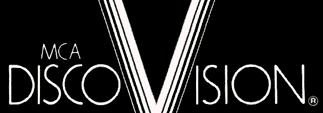|
Videodisc players, which, at press time, were officially on sale in eight U.S. markets (and unofficially available in many other areas), are generally delighting their owners with their ability to play high -quality video images through television sets. After some initial bugs were worked out, most reports have indicated that the Magnavision laser- optical players are performing excellently.
Of course, since a videodisc machine can only play preprogrammed discs, it's only as good as the programming available. And therein lies the problem - or rather, problems, because there are really two: quantity and quality.
A quick status report on the situation:
Initially, a relatively high percentage of discs simply refused to play, or skipped, or had other flaws. Since each two -sided disc actually consists of two individual discs glued together, there was some mismating. An occasional disc had the same program segment on both sides. One bewildered customer saw the first part of a movie, flipped the disc over and was treated to a demonstration of the 1980 Pontiac (General Motors uses special videodiscs in its showrooms).
Many of these early quality problems have now largely been corrected, and dealers say returns of faulty discs have dropped rapidly. However, DiscoVision Associates, which presses the records, is still coping with one snag: picture quality on the Extended Play, or EP disc. Optical players are designed to accommodate two different types of discs, you see- standard 30- minute -per -side records and EPs, which contain a whole hour of programming on each side. Originally, it was planned that EPs would be used for movies and standard discs for shorter subjects or educational and how -to material, which could benefit from the shorter discs' special- effects capabilities (freeze - frame, slow- motion, etc.). It hasn't worked out that way so far. Only two EP discs are now in circulation: "House Calls" and "Deliverance" A trial run of "Animal House" in the EP format was abandoned and the movie was issued on standard discs. But putting a movie on four or five discs is not only quite expensive; it interrupts the viewer's entertainment three or four times for record -changing during the course of the film. MCA, which releases the discs, says the picture problems are being solved and more one -hour discs will be released.
Ah, but what will be on them? Videodisc owners graciously forgive all the early shortcomings of the system- except the shortage of new programs. "How many times can you watch 'Jaws' ?" asked one owner. "I saw it in the theater, I saw it on pay -TV and I saw it on network TV. Where are the new programs ?" A good question.
When videodiscs and players were first introduced in December 1978, MCA issued its first catalogue, containing 202 program selections. So far, only 165 have actually been offered. A new edition, issued in June, contains the same 165 titles plus new ones. The most popular items in the catalogue have been movies- such as "Jaws" 1 and 2, "The Sting," "Animal House," "Deliverance" and "House Calls." But one videodisc dealer who accepts trade -ins on discs (top movies cost $24.95 new; he'll swap discs for $4.99) says his customers have now seen all the available records and are clamoring for more.
Now, says MCA, relief is on the way. The company has promised three to six new titles per month for the rest of the year, and DiscoVision is setting up a second plant to handle them. "The Jerk" and "1941" have already been added to the repertoire, along with "The Electric Horseman," "The Last Married Couple in America," "Coal Miner's Daughter" and "FM," the last of which was listed in the 1978 catalogue but never released. Concert discs in stereophonic sound (to emphasize the superiority of Magnavision's optical - disc system over RCA's upcoming disc system, which has mono sound) were also scheduled for release this summer, including albums by Abba, Olivia Newton-John and Loretta Lynn.
The MCA -label releases will soon be joined by the first videodiscs under other labels. Columbia Pictures hopes to offer up to 10 movies (one title disclosed already is the X -rated "Emmanuelle ") by this fall. Pioneer, which is marketing its own videodisc player compatible with Magnavision's, has formed Pioneer Artists to produce and acquire musical programs covering a "broad spectrum of tastes" for videodisc. And another programming consortium, called Optical Programming Associates, has been formed by MCA, North American Philips and Pioneer for creation of special programs designed to take advantage of the optical -disc player's flexibility.
Early next year, RCA is expected to introduce its own SelectaVision videodisc system, which isn't compatible with the Magnavision and Pioneer optical players. RCA vows that Selecta-Vision's debut will be accompanied by a catalogue of 150 available programs, and that new releases will be added monthly for a total of 300 titles by the end of 1981. Some of the titles will be the same as those in the DiscoVision catalogue, and some will be different.
In short, the videodisc programming famine isn't over yet, but an increasing number of selections should be available for video turntables as the year progresses.
|
